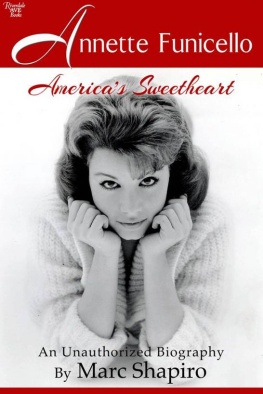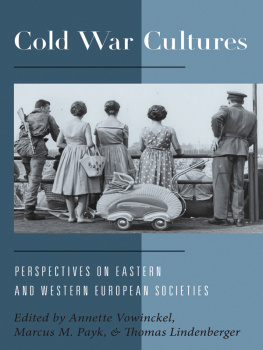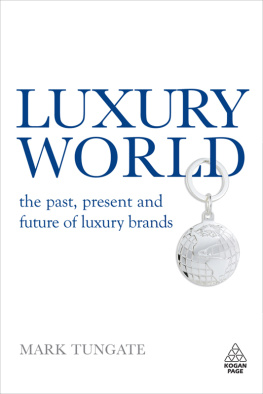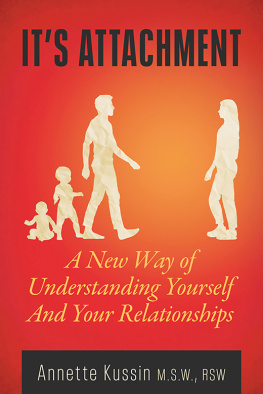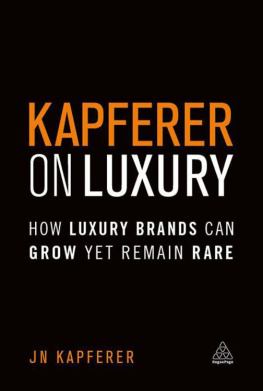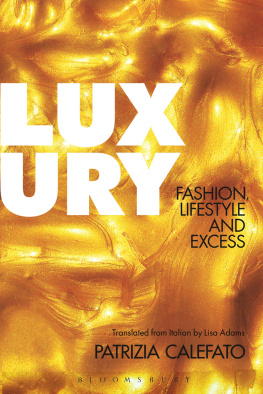Annette Condello - The Architecture of Luxury
Here you can read online Annette Condello - The Architecture of Luxury full text of the book (entire story) in english for free. Download pdf and epub, get meaning, cover and reviews about this ebook. year: 2013, publisher: Ashgate Publishing, genre: Romance novel. Description of the work, (preface) as well as reviews are available. Best literature library LitArk.com created for fans of good reading and offers a wide selection of genres:
Romance novel
Science fiction
Adventure
Detective
Science
History
Home and family
Prose
Art
Politics
Computer
Non-fiction
Religion
Business
Children
Humor
Choose a favorite category and find really read worthwhile books. Enjoy immersion in the world of imagination, feel the emotions of the characters or learn something new for yourself, make an fascinating discovery.

- Book:The Architecture of Luxury
- Author:
- Publisher:Ashgate Publishing
- Genre:
- Year:2013
- Rating:5 / 5
- Favourites:Add to favourites
- Your mark:
- 100
- 1
- 2
- 3
- 4
- 5
The Architecture of Luxury: summary, description and annotation
We offer to read an annotation, description, summary or preface (depends on what the author of the book "The Architecture of Luxury" wrote himself). If you haven't found the necessary information about the book — write in the comments, we will try to find it.
The Architecture of Luxury — read online for free the complete book (whole text) full work
Below is the text of the book, divided by pages. System saving the place of the last page read, allows you to conveniently read the book "The Architecture of Luxury" online for free, without having to search again every time where you left off. Put a bookmark, and you can go to the page where you finished reading at any time.
Font size:
Interval:
Bookmark:
THE ARCHITECTURE OF LUXURY
series editor: eamonn canniffe, manchester school of architecture, manchester metropolitan university, uk
The discipline of Architecture is undergoing subtle transformation as design awareness permeates our visually dominated culture. Technological change, the search for sustainability and debates around the value of place and meaning of the architectural gesture are aspects which will affect the cities we inhabit. This series seeks to address such topics, both theoretically and in practice, through the publication of high quality original research, written and visual.
Other titles in this series
The Challenge of Emulation in Art and Architecture
David Mayernik
978 1 4094 5767 1
The Architectural Capriccio
Memory, Fantasy and Invention
Edited by Lucien Steil
ISBN 978 1 4094 3191 6
The Architecture of Pleasure
British Amusement Parks 19001939
Josephine Kane
ISBN 978 1 4094 1074 4
No Matter: Theories and Practices of the Ephemeral in Architecture
Anastasia Karandinou
ISBN 978 1 4094 6628 4
Building Transatlantic Italy
Architectural Dialogues with Postwar America
Paolo Scrivano
ISBN 978 1 4724 1483 0
Forthcoming titles in this series
Architecture in an Age of Uncertainty
Edited by Benjamin Flowers
ISBN 978 1 4094 4575 3
The Architecture of Edwin Maxwell Fry and Jane Drew
Iain Jackson and Jessica Holland
ISBN 978 1 4094 5198 3
Annette Condello
Curtin University, Australia
ASHGATE
Annette Condello 2014
All rights reserved. No part of this publication may be reproduced, stored in a retrieval system or transmitted in any form or by any means, electronic, mechanical, photocopying, recording or otherwise without the prior permission of the publisher.
Annette Condello has asserted her right under the Copyright, Designs and Patents Act, 1988, to be identified as the author of this work.
Published by
Ashgate Publishing Limited
Wey Court East
Union Road
Farnham
Surrey, GU9 7PT
England
Ashgate Publishing Company
110 Cherry Street
Suite 3-1
Burlington, VT 05401-3818
USA
www.ashgate.com
British Library Cataloguing in Publication Data.
A catalogue record for this book is available from the British Library.
The Library of Congress has cataloged the printed edition as follows:
Condello, Annette.
The architecture of luxury / by Annette Condello.
pages cm. -- (Ashgate studies in architecture)
Includes bibliographical references and index.
ISBN 978-1-4094-3321-7 (hardback: alk. paper) -- ISBN 978-1-4724-3422-7 (ebook) -- ISBN 978-1-4724-3423-4 (epub)
1. Architecture-Human factors. 2. Architecture and society. 3. Luxury. I. Title.
NA2542.4.C655 2014
720.108--dc23
2013044884
ISBN 9781409433217 (hbk)
ISBN 9781472434227 (ebk-PDF)
ISBN 9781472434234 (ebk-ePUB)
This book offers an architectural interpretation of luxury. Concentrating on the architectural venues for pleasure, it traces the myths and application of luxury within architecture, interiors and designed landscapes. The basis of the book is a set of six historical categories of luxury sybaritic, Lucullan, architectural excess, rustic, neoEuropean and modern all related to the built and unbuilt environment. Each theme is defined in the context of luxury and takes into consideration different cultural contexts and historical periods. Architectural luxury is either an unqualified benefit or something present within strict limits. The book identifies areas where representations of luxury were realized or vanished, in Italy Sybaris, the Bay of Naples, Rome, Florence and Venice. It argues how the ideas of permissible and impermissible luxury have informed architecture and how they change from one context to another.
Myths about ancient Sybaris entered the realm of architectural history as a story of the origins of luxury and its use was subsequently criticised in a range of architectural venues not only in Italy but also elsewhere. Rustic Italianate forms emerged in the Ancien Regime through the works of Sebastiano Serlio at Fontainebleau and then as broken or rickety forms at Chambourcy and Trianon Gardens. Europeanized luxury transformed Latin American architecture in Manaus, Recife and Mexico City. And in the United States, suburban Riversides and Chicagos luxurious architecture became more modern because the cities were inspired by sybaritic myths. In all of these contexts the book distinguishes the relations between specific notions of luxury and the practice of architecture. Providing voluptuous settings for the nobles and the leisure class, luxury took the form of not only grand palaces, but also follies, country and suburban houses, private or public entertainment venues and ornate skyscrapers with fast lifts. This resulted in a continuous prompt to indulge still further in luxury.
Annette Condello
This book had its genesis many years ago while dining in a small house designed by Italian architect Francesco Venezia perched on top of a grotto in Posillipo, overlooking the Bay of Naples. Inserted into its sinuous interior, lined entirely with walnut timber panels, was a large palm fossil. This exquisite insertion sparked the idea of researching the topic of luxury. Over a number of years, I discussed luxury with various people. At times I did meet some who were completely uninterested in the topic and rejected luxurys attractiveness. This helped me to think about luxury more deeply and consider the myths about construction, especially how they helped shape architectural venues.
The topic of luxury enlarged when I flipped through an old Conde Nast Traveller magazine. There, in a review of New Yorks luxurious Carlyle Hotel entitled Suite Dreams, I pondered the term sybaritism. By 2003 my project evolved into a PhD dissertation, completed at the University of Western Australia. Interjected by a year-long stint at the National University of Mexico financed by the Mexican Government, in April 2004 I attended the Society of Architectural Historians 57th Annual Meeting in Providence, Rhode Island in the United States. There, a session was dedicated to luxury and I met Marc Trieb and Kristine Miller and I thank them for inviting me to visit Americas gilded palaces, The Breakers and Marble House.
I thank Marco Frascari, Fernando Moreira and Rebecca Earle for their generous and critical comments. I am also grateful to Allen S. Weiss, Neil Leach, Michele Sbacchi, Catherine Kovesi, Christopher Berry, John Dixon Hunt, Michel Baridon, Keith Eggener, Luis Carranza, Wim de Wit, Rachel Fletcher, Jeffrey Needell, Mauricio Tenorio-Trillo and Juliet Odgers for their suggestions or useful references.
While I was conducting my research, I had the opportunity to present sections of this work at many venues. They include: the Old Tate Gallery in London, Favara Castle in Sicily, National University of Mexico, Australian National University, University of Boston, University of Bordeaux, University of Adelaide, Universidad de Brasilia, the Universidad de Pernumbuco and the Mexican Embassy in Canberra. I thank all those who guided me with suggestions. For the generosity in offering me their hospitality I thank Bibi Leone, Ugo Ballerini, Fernando Moreira, John and Janis Notz, Carmen Popescu, Nancy Steiber and Henry Kuehn. I thank the director Silvanna Luppino of the Sybaris Archaeological Museum in Calabria, specifically Isora Migliardi for a personal tour of Sibari. I am grateful to my partner, Christopher Vernon, for his support, intellectual generosity and reading of earlier drafts.
Next pageFont size:
Interval:
Bookmark:
Similar books «The Architecture of Luxury»
Look at similar books to The Architecture of Luxury. We have selected literature similar in name and meaning in the hope of providing readers with more options to find new, interesting, not yet read works.
Discussion, reviews of the book The Architecture of Luxury and just readers' own opinions. Leave your comments, write what you think about the work, its meaning or the main characters. Specify what exactly you liked and what you didn't like, and why you think so.



